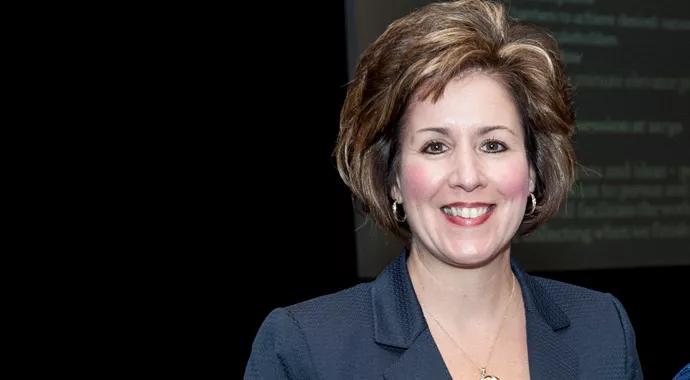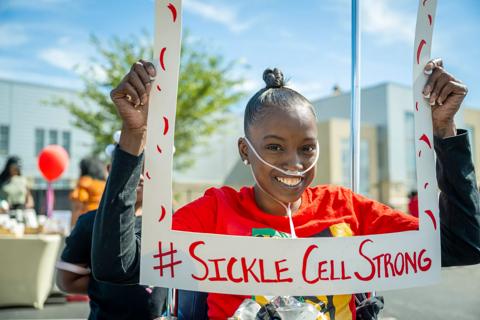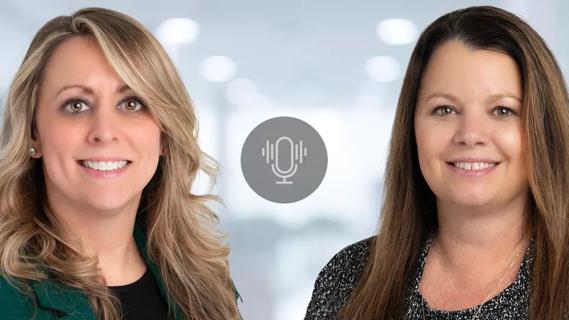Cleveland Clinic best practices for a Magnet culture

By Kelly Hancock, MSN, RN, NE-BC
Advertisement
Cleveland Clinic is a non-profit academic medical center. Advertising on our site helps support our mission. We do not endorse non-Cleveland Clinic products or services. Policy
Next month, Cleveland Clinic Nursing will join hundreds of other nursing organizations at one of the profession’s most premiere events – the American Nurses Credentialing Center (ANCC) National Magnet Conference® in Atlanta.
Approximately 7,000 nurses attend the National Magnet Conference each year to share evidence-based practices, explore the newest advances in nursing quality improvements, and celebrate the highly coveted ANCC Magnet Recognition Program®.
For the 2015 conference, numerous Cleveland Clinic nurses will proudly be in attendance, taking in all the event has to offer. Those interested are welcome to visit our exhibit booth or hear more about Cleveland Clinic best practices during two of the conference’s concurrent sessions:
Since the 2014 National Magnet Conference, Cleveland Clinic Hillcrest Hospital became the third hospital in the Cleveland Clinic health system to earn Magnet designation. (Cleveland Clinic main campus first received designation in 2003, and Cleveland Clinic Fairview Hospital in 2009.)
As staff nurses and nurse leaders can attest, earning Magnet designation is no easy feat. It includes three years of benchmarking quality care and requires organizations to demonstrate their success in achieving exemplary practice in each of Magnet’s five outcomes-based components:
Advertisement
However, I’m sure most staff nurses and nurse leaders can also agree that once a nursing organization achieves Magnet designation and can say they: “live the gold standard for nursing excellence,” the journey to achieving Magnet is more than worth it – delivering significant benefits to nursing teams, hospitals, patients and communities.
It’s no secret that living this culture of nursing excellence encompasses several layers. The framework outlined in the Magnet Model offers a great roadmap, but there are many strategies and tactics nursing organizations can apply to achieve success.
With three hospitals that have now received the designation, the following includes a selection of notable systemwide best practices that Cleveland Clinic Nursing has found to give our nurses the tools they need to ensure our organization is practicing – daily – in a way that aligns with Magnet standards and follows the 14 Forces of Magnetism.
Professional conferences
Professional development and ongoing education are essential to ensuring nurses deliver high-quality care, practice the profession to the best of their abilities, and bring new knowledge and insight to continually advance both nursing and healthcare.
In addition to maintaining a comprehensive tuition-reimbursement program, Cleveland Clinic Nursing creatively uses endowment funds to send our nurses to local, regional and national conferences. The nursing conference attendance program consists of two primary components: mentor/mentee offerings and scholarship opportunities. Both components utilize endowment funds to cover conference-related travel and expenses and, in both instances, nurses must meet outlined eligibility requirements.
Advertisement
The mentor/mentee offering allows nurses presenting a podium or poster presentation at a nursing conference to serve as a mentor and ask more novice nurses to attend the conference with them as their mentees – offering added experience and confidence.
With the scholarship opportunities portion of the program, each of Cleveland Clinic’s chief nursing officers is given the opportunity to hand-select nurses from their locations for conference attendance. Chief nursing officers are notified when conference attendance opportunities are available and may submit their requests accordingly.
Shared governance
While ANCC’s Magnet Recognition Program doesn’t specifically require shared governance be in place, full integration of the concept of shared governance is a must. The Magnet application manual defines shared leadership/participative decision-making as “a model in which nurses are formally organized to make decisions about clinical practice standards, quality improvement, staff and professional development and research.”
At Cleveland Clinic, our shared governance model encompasses the four key principles of shared governance: equality, empowerment, accountability and partnership. And at the center is our Professional Practice Model (PPM), which is based on the philosophies of relationship-based care, thinking in action and serving leader, and grounded in Cleveland Clinic’s guiding principle of putting ‘Patients First.’ ‘Patients First’ is a core concept of nursing practice at Cleveland Clinic – and a primary goal of all shared governance activities.
Advertisement
With this representation, our primary focus of nursing is at the unit/clinic level – where nurses provide direct patient care. The mission, vision and values of our organization provide a focus for the shared governance structure, which is designed to promote excellence to the delivery of nursing care while also promoting nurse loyalty, job satisfaction and leadership qualities.
Affinity groups
Specialty affinity groups are key to positively impacting patient populations through the standardization of practice and implementation of best practices. At Cleveland Clinic, we have created numerous affinity groups designed to focus on the integration of best practices in specialty areas such as emergency services, wound care, oncology, surgical services, ambulatory, pediatrics, behavioral health, medical/surgical and critical care nursing.
These groups collaborate and innovate 24/7, and as a result of their work Cleveland Clinic Nursing has implemented best practices across multiple locations in many imperative patient care areas, such as:
Ongoing monitoring
Cleveland Clinic continually monitors its internal nursing benchmarks to ensure we are meeting them. Our benchmarking system actually goes beyond what is required by Magnet, and is pivotal to ensuring we are meeting the standards of Magnet in our nursing practice. We actively use custom-created dashboards as a monitoring tool. The dashboards tout trending reports on patient care and make it easy to visually compare quality indicators to benchmarks. For example, nurse managers use the dashboards to share valuable information with their staffs.
Advertisement
Part of ongoing monitoring is planning feasible, actionable outcomes metrics prior to starting nursing initiatives. For example, to address patient fall rates, hospitals need to provide data that proves fall rates are lower than national averages while also describing frontline nurse involvement in innovative action-planning processes to achieve targeted outcomes. To effectively measure success and execute on a vision for excellence, ongoing monitoring is key and should include gap analyses that focus on outcomes, evidence-based practices and research.
In addition to the ‘bigger picture’ systemwide strategies noted above, each Cleveland Clinic hospital that has achieved Magnet designation has a wide variety of tactics they have implemented to ensure nursing excellence. For example, Fairview Hospital has ‘Magnet Monday’ communications that nurse managers share with their teams. These are focused on Magnet issues or care excellence examples. The hospital also has ‘Magnet champions’ from each nursing unit or area that meet monthly to share achievements and plan activities that promote the principles associated with Magnet recognition.
Kelly Hancock is the Executive Chief Nursing Officer of the Cleveland Clinic Health System, and Chief Nursing Officer of Cleveland Clinic Main Campus.
Advertisement

Nurses play key role in comprehensive lifetime treatment program

Customized bots improve speed, efficiency by streamlining daily clinical, clerical tasks

Nurses play pivotal role in patients’ ability to recover in the comfort of their own homes

New protocol reduces costs, increases patient and caregiver satisfaction

Advocating for patient safety is imperative in fast-paced surgical settings

M-Power program improves the perinatal experience for people who have survived abuse

Advice for those pursuing a WOC nursing career

Veteran nurse shares his experience as a caregiver and community volunteer